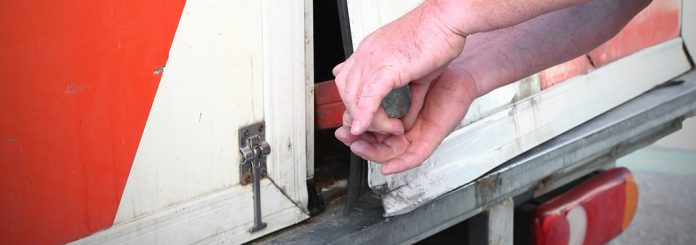2 minute read
Heavy equipment and tools are highly susceptible to theft as it’s fairly easy to steal and resell these types of products. There is also typically a low recovery rate when it comes to tracking down these stolen goods. As of 2021, estimates suggest that construction theft costs Canada up to $1 billion.
The financial impact of stolen tools and equipment extends beyond mere replacement costs. The loss of specific tools or unique equipment can delay project completion leading to increased costs. Additionally, you, the contractor, may be held liable if the stolen equipment causes damages to property.
How can I prevent tool theft on a job site?
Not all theft is preventable, but contractors can make it more difficult for thieves to steal their tools and equipment. To help mitigate tool theft on a job site, contractors can implement various precautions:
- Ensure adequate lighting on work sites and securely lock up tools and equipment. A well-lit job site can deter potential thieves seeking inconspicuous environments.
- Disconnect batteries and ignition fuses and store them securely at the end of each workday.
- Employ tracking technologies like GPS or RFID (radio frequency identification technology) to monitor the whereabouts of vehicles and equipment.
Use detailed recordkeeping to track your inventory
What does recordkeeping look like for a contractor?
Recordkeeping means maintaining an up-to-date inventory and detailed records of all equipment and tools utilized on project sites.
Why is recordkeeping important?
Recordkeeping can help with inventory management across multiple job sites and can help make financial decisions easier when it comes to equipment maintenance and replacement.
What should contractors keep records of?
Whether you use paper or software to do your recordkeeping, it’s important to record key details about your equipment. These details may include:
- Serial numbers and product identification
- Make and model
- Description
- Year tools or equipment was built
- Invoice details, such as purchase date, value, and cost
- Markings, logos, and any identifying features
- Service dates
- Photographs
If any equipment or tools are stolen, contractors can reference their records to aid in the recovery process.
How do I recover stolen equipment or tools?
To recover stolen equipment or tools, contractors should consider registering their equipment and reporting theft information to the relevant authorities, including Crime Stoppers, equipment manufacturers, and law enforcement agencies.
Reporting theft to the police ensures that stolen equipment is documented in their system, potentially deterring future buyers from unknowingly purchasing stolen goods. Then, even if another contractor decides to purchase your equipment and does a background check, they will see that it has been reported as stolen.
Additionally, if stolen equipment is brought into a dealer for repairs or parts, and the manufacturer has your equipment in their stolen equipment database, your equipment may be recovered.
Recordkeeping can help contractors manage tool theft
While recordkeeping cannot entirely prevent tool and equipment theft, it facilitates efficient inventory management and simplifies the reporting process in case a theft happens. By protecting and managing your equipment, you’ll potentially avoid the cost of replacement tools and costly project delays. The right contractors insurance can also help ease your mind. Visit our contractors and skilled tradespeople page to learn more about how we can help protect your business.
This blog is provided for information only and is not a substitute for professional advice. We make no representations or warranties regarding the accuracy or completeness of the information and will not be responsible for any loss arising out of reliance on the information. Terms, conditions and exclusions apply to coverage. See policy for details.

